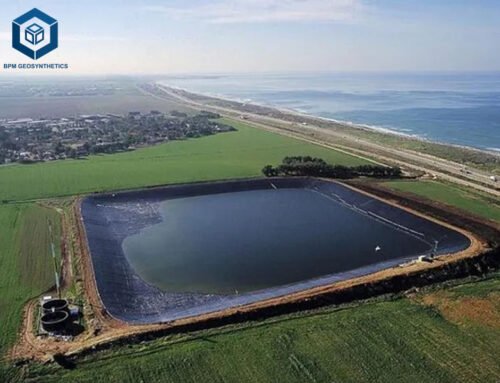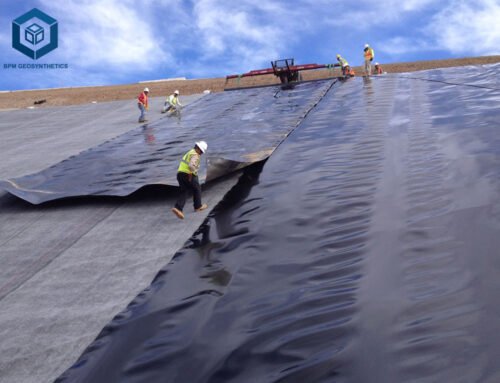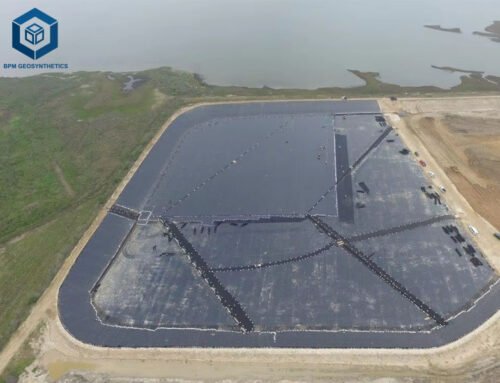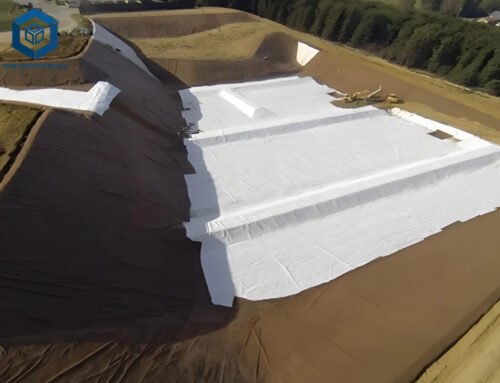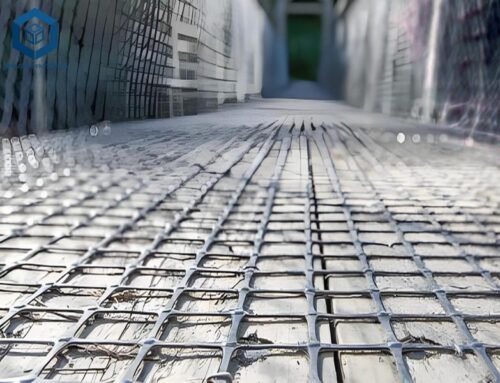High-Density Polyethylene (HDPE) membrane, commonly referred to as HDPE geomembrane, is a versatile geosynthetic material engineered for impermeable containment in environmental, civil, and industrial applications. With a global geomembrane market valued at USD 2.3 billion in 2024 and projected to grow at a CAGR of 5.4% through 2030, HDPE membranes dominate, accounting for 60% of applications due to their durability, chemical resistance, and cost-effectiveness (MarketsandMarkets, 2024). BPM Geosynthetics, a leading manufacturer, notes that HDPE membranes are used in 70% of containment projects worldwide, from landfills to aquaculture. This guide explores the definition, properties, specifications, applications, installation, and trends of HDPE membranes, providing engineers, contractors, and project managers with actionable insights for effective containment solutions.
1. What Is an HDPE Membrane?
Definition of HDPE Membrane
An HDPE membrane or HDPE geomembrane is a low-permeability synthetic liner made from high-density polyethylene resin, a thermoplastic polymer with a density of 0.940–0.965 g/cm³. It serves as a barrier to prevent the migration of liquids, gases, or contaminants in geotechnical projects. Unlike other geomembranes (e.g., PVC, LLDPE), HDPE membranes offer superior tensile strength and chemical inertness, making them ideal for high-risk containment. BPM Geosynthetics produces HDPE membranes using 97–99% virgin resin, blended with 2–3% carbon black, antioxidants, and UV stabilizers for enhanced longevity (BPM Geosynthetics, 2024).
Manufacturing Process
HDPE membranes are manufactured through a precise process ensuring consistent quality, adhering to ASTM D5199 and GRI-GM13 standards:
- Resin Preparation: Virgin HDPE resin is mixed with additives like carbon black (UV resistance), antioxidants, and stabilizers.
- Extrusion: The mixture is melted and extruded into a continuous sheet (0.5–3.0 mm thick) via blown film or flat die extrusion.
- Cooling and Rolling: The sheet is cooled, trimmed to 4–10 meters wide, and rolled into lengths up to 100 meters.
- Texturing (Optional): Embossing or nitrogen gas creates textured surfaces for increased friction on slopes.
BPM Geosynthetics ensures a thickness tolerance of ±5%, guaranteeing reliability across applications.
Key Characteristics of HDPE Membrane
HDPE membranes excel due to their robust material properties, validated by industry-standard tests:
- Chemical Resistance: Inert to acids, alkalis, and hydrocarbons (pH 2–12), per ASTM D5322.
- Low Permeability: Permeability coefficient <1×10⁻¹³ cm/s, blocking 99.9% of fluid migration (ASTM D5887).
- UV Stability: Retains 90% strength after 1600 hours of UV exposure (ASTM D7238).
- Tensile Strength: 15–35 MPa, resisting mechanical stress (ASTM D6693).
- Puncture Resistance: ≥500 N for 1.5 mm thickness (ASTM D4833).
- Temperature Range: Operates from -50°C to 80°C (ASTM D746).
- Stress Crack Resistance: ≥500 hours, ensuring durability (ASTM D5397).
These properties make HDPE membranes the preferred choice for 65% of environmental containment projects globally.
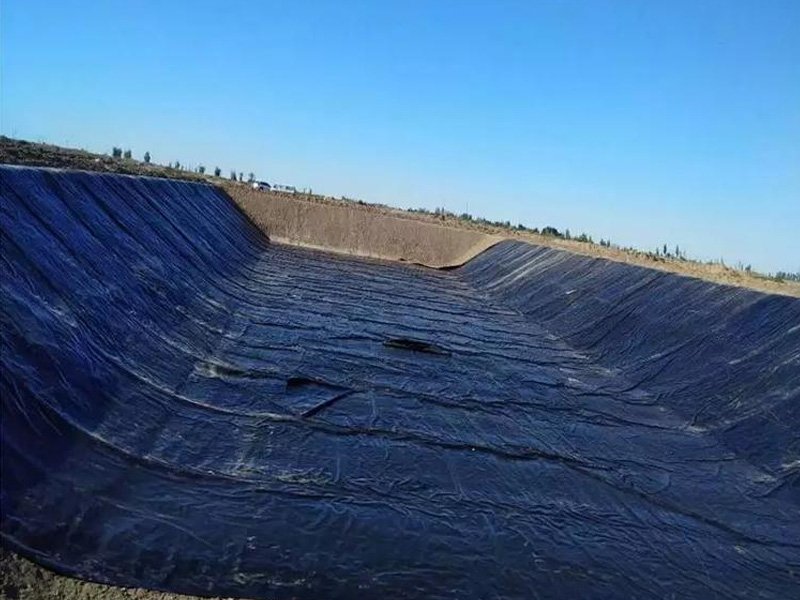
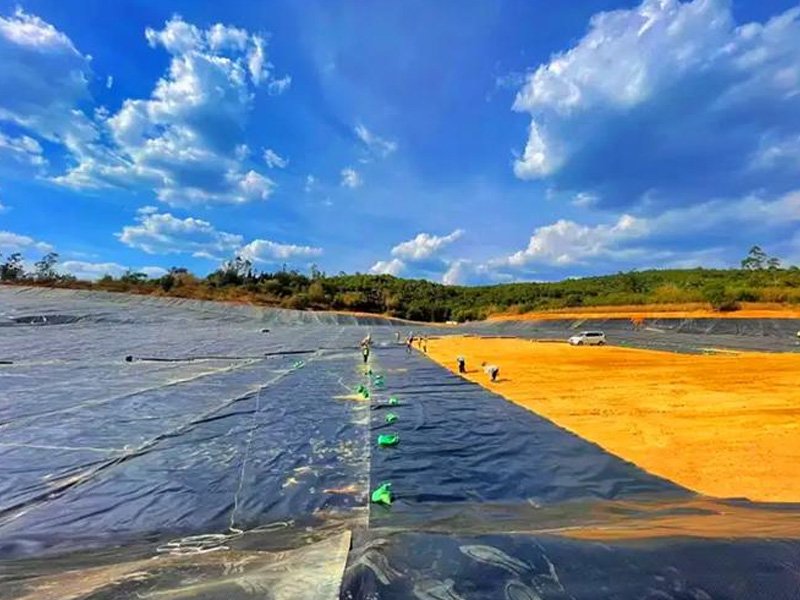
2. Technical Specifications of HDPE Membrane
Standard Sizes and Thicknesses
HDPE membranes are available in various dimensions to suit project needs:
- Thickness: 0.5 mm, 0.75 mm, 1.0 mm, 1.5 mm, 2.0 mm, 3.0 mm (20–120 mils).
- Width: 4–8 meters (standard), up to 10 meters for custom orders.
- Length: 50–100 meters per roll, customizable up to 200 meters.
- Colors: Black (default), green (municipal), white (biogas), blue (aquaculture).
Performance Parameters
The table below summarizes key specifications for 1.0 mm and 2.0 mm HDPE membranes, per GRI-GM13:
| Parameter | 1.0 mm HDPE | 2.0 mm HDPE | Test Standard |
| Tensile Strength (MPa) | ≥17 | ≥30 | ASTM D6693 |
| Elongation at Break (%) |
≥700 |
≥700 | ASTM D6693 |
| Puncture Resistance (N) | ≥320 | ≥640 | ASTM D4833 |
| Stress Crack Resistance (hrs) | ≥500 | ≥500 | ASTM D5397 |
| Permeability (cm/s) | <1×10⁻¹³ | <1×10⁻¹³ | ASTM D5887 |
| UV Resistance (% retained) | ≥90 after 1600 hrs | ≥90 after 1600 hrs |
ASTM D7238 |
Source: BPM Geosynthetics, GRI-GM13.
Smooth vs. Textured HDPE Membrane
- Smooth HDPE: Offers maximum impermeability and cost-efficiency, ideal for flat surfaces like pond liners. Permeability is 20% lower than textured variants.
- Textured HDPE: Features embossed patterns (e.g., diamond, stripe) with a friction coefficient of 0.55, enhancing stability on slopes up to 45° by 30% (ASTM D5321).
3. Applications of HDPE Membrane
HDPE membranes are critical in diverse sectors, holding a 65% market share in containment applications (Geosynthetic Institute, 2024). Below are key uses, supported by data and case studies.
Landfill Liners and Caps
HDPE membranes prevent leachate from contaminating groundwater in landfills, meeting stringent environmental regulations.
- Role: Primary/secondary liners, landfill caps.
- Performance: 2.0 mm HDPE reduces leachate seepage by 99.9% (ASTM D5887).
- Case Study: A 100,000 m² landfill in Saudi Arabia used 2.0 mm HDPE, reducing contamination risks by 95% (BPM Geosynthetics, 2024).
- Standards: Complies with EPA Subtitle D and EU Landfill Directive.
- Market Share: 40% of HDPE membrane production is for landfills (Technavio, 2024).
Wastewater Treatment Ponds
HDPE membranes line lagoons and digesters, resisting corrosive chemicals in wastewater treatment.
- Role: Liners for wastewater lagoons, sludge ponds.
- Performance: 1.5 mm HDPE withstands pH 2–12 solutions for 20+ years (ASTM D5322).
- Case Study: A 1.0 mm landfill in Sri Lanka used a 50,000 m² HDPE membrane, achieving zero leakage over five years (BPM Geosynthetics, 2021).
- Market Data: 20% of HDPE membranes are used in wastewater treatment (Technavio3, 2024).
Mining Operations
HDPE membranes contain acidic or cyanide-based solutions in heap leach pads and tailings ponds.
- Role: Liners for heap leach pads, tailings dams.
- Performance: 2.0 mm HDPE resists 0.5 M sulfuric acid for 15+ years.
- Case Study: A 200,000 m² tailings facility in South Africa used 1.5 mm textured HDPE, reducing environmental impact by 90% (BPM Geosynthetics, 2021).
- Market Growth: Mining applications grew by 12% in 2024 (Mordor Intelligence, 2024).
Aquaculture Ponds
HDPE membranes maintain water quality in fish and shrimp farms by preventing seepage.
- Role: Liners for aquaculture ponds.
- Performance: 0.0 mm HDPE reduces water loss by 98% (ASTM D5887).
- Case Study: BPM supplied 300,000 m² of 0.6 mm HDPE for a Sri Lankan shrimp farm, increasing yield by 15% (BPM Geosynthetics, 2021).
- Sustainability: Non-toxic, recyclable, ISO 14001-compliant.
Water Reservoirs and Canals
HDPE membranes minimize seepage in irrigation canals and potable water reservoirs, vital in arid regions.
- Role: Liners for reservoirs, canals, water tanks.
- Performance: 1.5 mm HDPE saves 1.2 million gallons of water per hectare annually.
- Case Study: A 50,000 m² reservoir in India used 2.0 mm HDPE, reducing water loss by 92% (BPM Geosynthetics, 2024).
- Market Trend: 25% of HDPE membrane demand is for water management (DataIntelo, 2024).
Oil and Gas Containment
HDPE membranes provide secondary containment for fuel storage and refineries, preventing soil contamination.
- Role: Secondary containment systems, spill containment.
- Performance: 1.5 mm HDPE resists hydrocarbons for 20+ years (ASTM D5322).
- Case Study: A UAE refinery used 1.0 mm HDPE for a 10,000 m³ spill containment system, preventing groundwater pollution (BPM Geosynthetics, 2023).
- Standards: Meets API 650 and OSHA requirements.
Civil Engineering Projects
HDPE membranes prevent water infiltration in tunnels, highways, and dams, enhancing infrastructure longevity.
- Role: Tunnel liners, roadbed barriers, dam liners.
- Performance: 2.0 mm HDPE reduces maintenance costs by 30% (ASTM D5887).
- Case Study: A Chinese highway project used 1.5 mm HDPE, reducing water damage by 85% (BPM Geosynthetics, 2024).
- Market Share: 15% of HDPE membranes are used in civil engineering (Geosynthetic Institute, 2024).
4. Benefits of HDPE Membrane
HDPE membranes offer significant advantages over alternatives like PVC or LLDPE, securing a 60% market share (Layfield Group, 2023):
- Chemical Resistance: Resists acids, alkalis, and hydrocarbons, ideal for harsh environments.
- Durability: 50-year service life, reducing replacement costs by 40%.
- Impermeability: Blocks 99.9% of fluid migration (ASTM D5887).
- UV Stability: Retains 90% strength after 1600 hours of UV exposure.
- Cost-Effective: 20–30% cheaper than concrete or clay liners, with 50% faster installation.
- Eco-Friendly: Non-toxic, recyclable, ISO 14001-compliant.
- Ease of Installation: Thermal welding ensures leak-free seams, cutting labor costs by 25%.
5. Installation Process for HDPE Membrane
Proper installation is critical for HDPE membrane performance. BPM Geosynthetics outlines the following steps:
- Subgrade Preparation: Clear sharp objects, compact subgrade to 95% Proctor density.
- Panel Deployment: Unroll panels perpendicular to slopes, allowing 10–15 cm wrinkles for thermal expansion.
- Welding: Use dual-hot wedge welding (300–400°C, 1.5–2.5 m/min) or extrusion welding for patches.
- Seam Testing: Perform peel tests (ASTM D6392), shear tests, and electronic leak location surveys (ELLS) for 100% seam integrity.
- Anchoring: Secure edges in trenches or with mechanical bars to prevent wind uplift.
- Covering: Apply geotextiles or soil within 30 days to protect from UV and mechanical damage.
Case Study: A 2024 Chilean landfill installed 75,000 m² of 1.5 mm HDPE membrane, achieving zero leaks after ELLS testing (BPM Geosynthetics, 2024).
6. Comparison with Other Geomembranes
| Material | Chemical Resistance | Flexibility | UV Stability | Cost ($/m²) | Applications |
| HDPE | Excellent | Low | Excellent | 1.5–3.0 | Landfills, Mining, Ponds |
| PVC | Moderate | High | Moderate | 1.0–2.5 | Canals, Decorative Ponds |
| LLDPE | Good | High | Good | 1.2–2.8 | Aquaculture, Flexible Liners |
| EPDM | Good | Very High | Excellent | 2.0–4.0 | Roofing, Landscaping |
HDPE membranes excel in chemical resistance and longevity, making them ideal for high-risk containment.
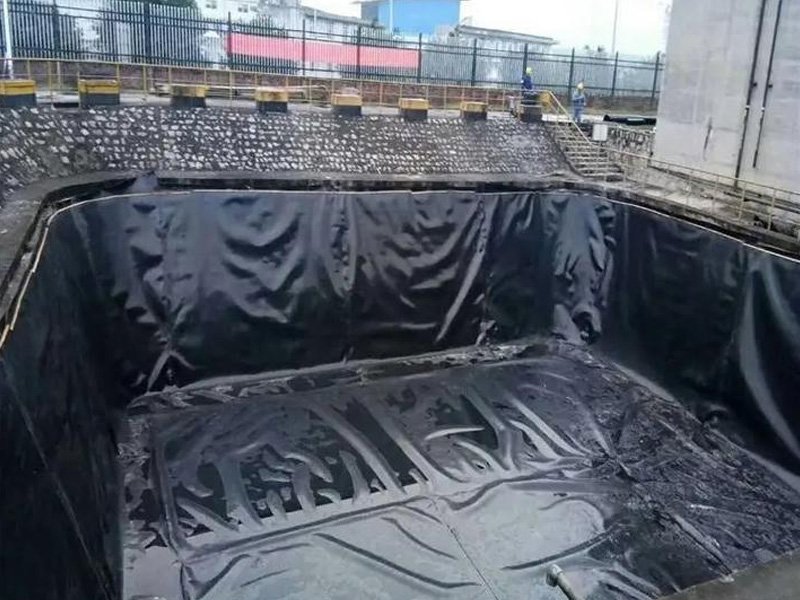
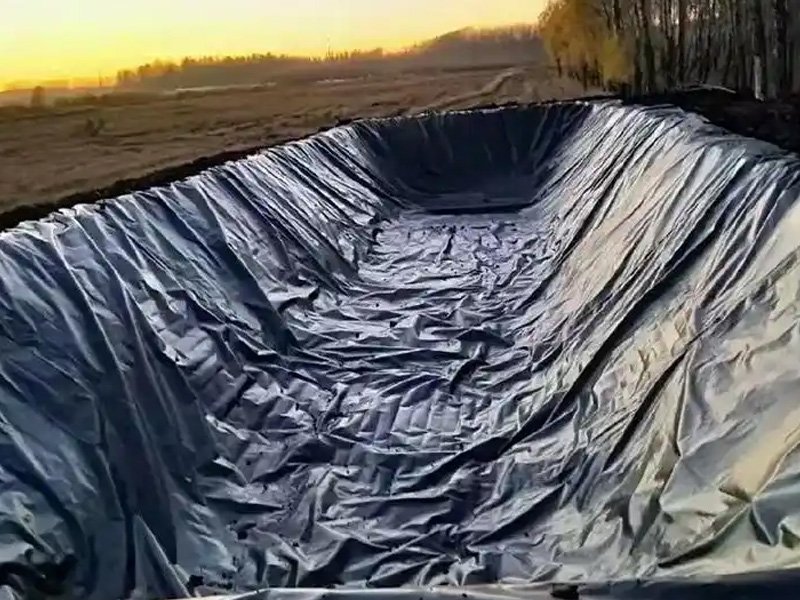
7. Industry Trends in HDPE Membrane
The HDPE membrane industry is evolving, driven by innovation and sustainability. Key trends include:
Sustainability
- Trend: 40% of manufacturers use recycled HDPE resin, reducing carbon emissions by 15%.
- Example: BPM’s 2024 production included 20% recycled HDPE for non-critical applications (BPM Geosynthetics, 2024).
Advanced Texturing
- Trend: New embossing techniques increase friction by 35%, improving slope stability.
- Example: BPM’s textured HDPE enhances performance on 45° slopes (BPM Geosynthetics, 2019).
Smart Monitoring
- Trend: Sensors for real-time leak detection are used in 10% of landfill projects.
- Example: A 2025 Australian landfill used sensor-equipped 2.0 mm HDPE, saving 20% on inspections (Geosynthetics Magazine, 2025).
Thicker Liners
- Trend: Demand for 2.0–3.0 mm HDPE grew by 8% in mining and landfills.
- Example: South African mines adopted 2.0 mm liners for 30% higher puncture resistance (Mordor Intelligence, 2024).
Global Market Expansion
- Trend: Asia-Pacific accounts for 45% of HDPE membrane demand, driven by infrastructure.
- Example: India’s 2024 canal projects used 1.5 mm HDPE for 1 million m² (Technavio, 2024).
8. How to Choose the Best HDPE Membrane
Selecting the optimal HDPE membrane involves:
- Thickness: Use 0.5–1.0 mm for low-risk projects (e.g., aquaculture); 1.5–2.0 mm for landfills and mining.
- Surface Type: Textured for slopes >10°; smooth for flat surfaces.
- Chemical Exposure: Verify resistance to specific chemicals (e.g., sulfuric acid for mining).
- Certifications: Ensure ASTM, GRI-GM13, or ISO compliance.
- Budget: Balance thickness and texture with costs; 1.0 mm HDPE averages $1.5–2.0/m².
Pro Tip: Request samples and conduct third-party testing (e.g., ASTM D5322) to validate performance.
9. Final Thoughts
HDPE membranes are indispensable for modern containment, offering unmatched impermeability, chemical resistance, and durability across landfills, mining, aquaculture, and water management. With a market set to reach USD 3.2 billion by 2030, their applications are expanding, driven by sustainable practices and smart technologies. BPM Geosynthetics’ high-quality liners, compliant with ASTM and GRI-GM13, have served 36+ countries, including 300,000 m² projects like Sri Lanka’s aquaculture farms. By selecting the right thickness, texture, and supplier, and adopting trends like sensor integration, project managers can achieve 99.9% containment efficiency while optimizing costs.
Contact BPM Geosynthetics to source premium HDPE membranes at best factory price.

